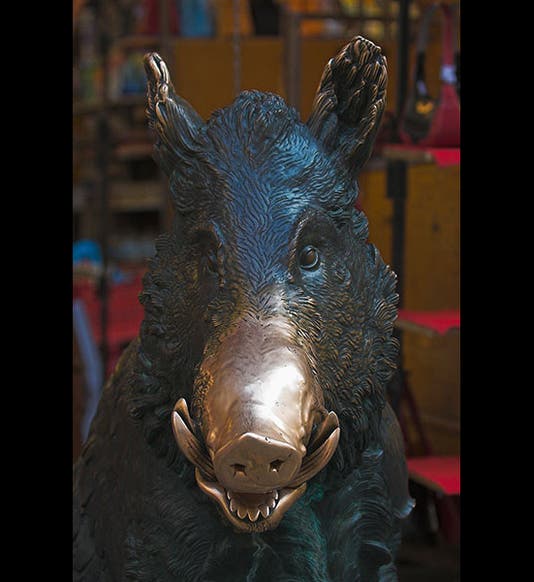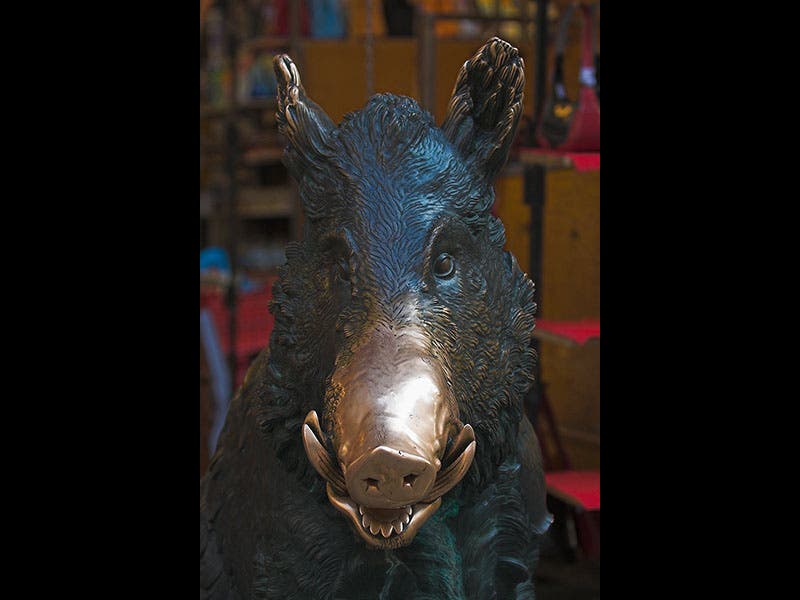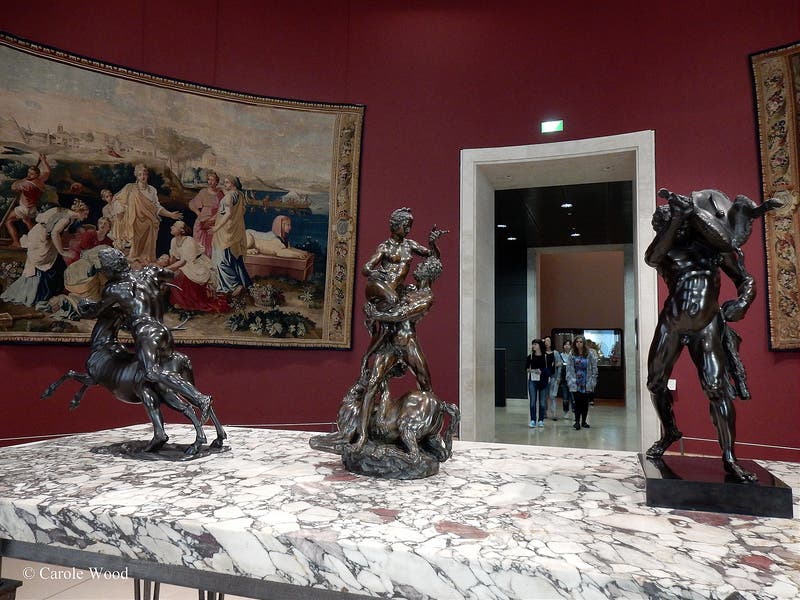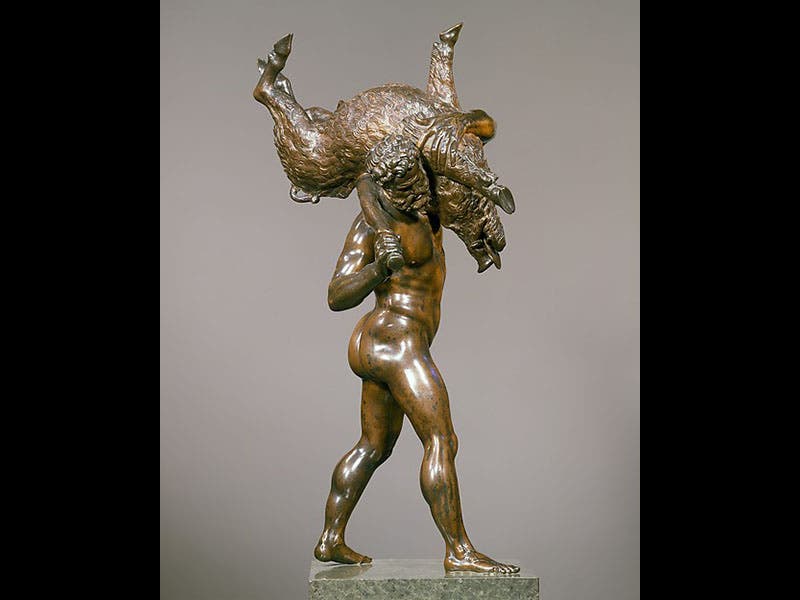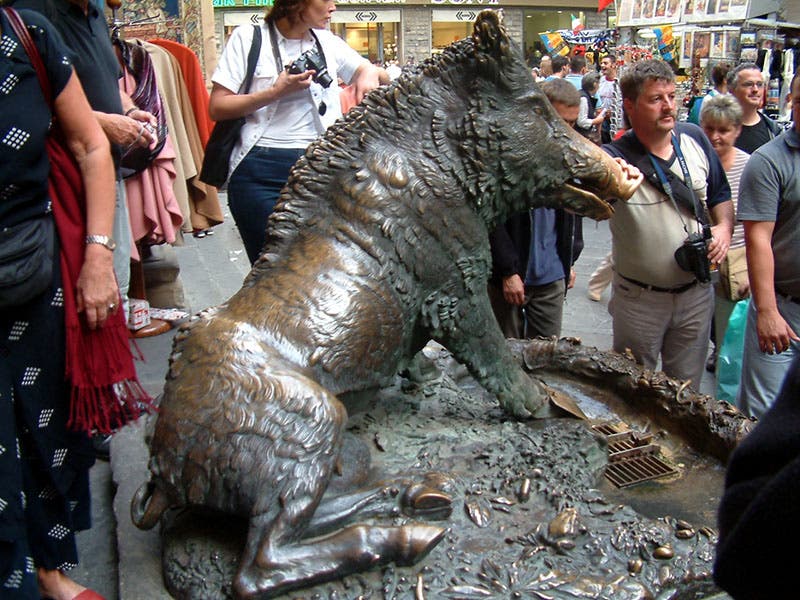Scientist of the Day - Pietro Tacca
Pietro Tacca, an Italian sculptor, was born Sep. 16, 1577. The term "animalier" is often applied to nineteenth-century French sculptors who specialized in animals; if Tacca had lived a few centuries later, and a little further north, he would certainly have qualified for the label. He was a student of Giambologna, and many of Tacca’s pieces are reduced-size bronze versions of his master's originals. On a table in the Louvre are two such bronzes (second image); Heracles and the Cerynian Stag (left) and Heracles and the Erymanthian Boar (right; the center piece is by a different sculptor), both of which involve wild animals. The Met in New York has a different version of Heracles and the boar (third image), which they seem reluctant to attribute to Tacca, although the museum description clearly suggests that Tacca was the sculptor.
Tacca seems to have liked wild boars. His most famous piece is a variation on a classical marble and depicts a sitting boar. It is usually called the Porcellino. The original is in the Museo Bardini in Florence, but the version familiar to most people is the bronze that sits in the Mercato Nuovo, not too far away (fourth image). It is said that a rub of the Porcellino's nose will ensure a return to Florence, so the boar's snout sports a polish wrought by hundreds of thousands of hands (first image). There are many reproductions of the Porcellino set up in city squares all over the world; we here in Kansas City have one, hunkered down on the Country Club Plaza (fifth image). His nose isn't quite as shiny as the one in Florence. How strange.
Dr. William B. Ashworth, Jr., Consultant for the History of Science, Linda Hall Library and Associate Professor, Department of History, University of Missouri-Kansas City. Comments or corrections are welcome; please direct to ashworthw@umkc.edu.

